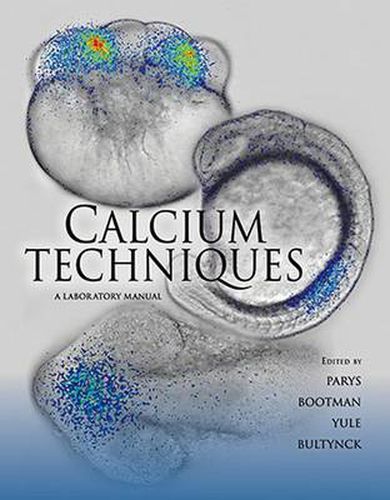Readings Newsletter
Become a Readings Member to make your shopping experience even easier.
Sign in or sign up for free!
You’re not far away from qualifying for FREE standard shipping within Australia
You’ve qualified for FREE standard shipping within Australia
The cart is loading…






Life begins with a surge of calcium ions (Ca2+) at fertilization, and thereafter, Ca2+ signaling influences nearly every aspect of mammalian development and physiology, from gene expression and cell proliferation to muscle contraction and nerve impulses. To create spatiotemporally distinct Ca2+ signals, cells use a variety of mechanisms to recognize, transport, and buffer Ca2+. Thus, a diverse range of reliable experimental techniques is necessary to study the movement of Ca2+ and the various effectors involved.
This laboratory manual provides step-by-step protocols for studying many facets of Ca2+ signaling, as well as background information on the principles and applications of the techniques. Contributors discuss how to use fluorescent, luminescent, and genetically encoded Ca2+ probes in conjunction with state-of-the-art imaging modalities to characterize Ca2+ signals. Electrophysiological measurements of Ca2+ channel activity are described, as are radioactive Ca2+ flux assays and methods to investigate signaling mediated by specific Ca2+-mobilizing messengers (IP3, cADPR, and NAADP). Techniques to modulate and suppress intra- and intercellular signals are also provided. Each protocol is complete with a list of required materials, detailed recipes for media and reagents, and troubleshooting advice.
Specific chapters are devoted to Ca2+ signaling techniques in non-mammalian systems, such as plants, yeast, zebrafish, and Xenopus. Methods for assessing Ca2+-binding kinetics and strategies for developing mathematical models of Ca2+ signaling are also included. Thus, this manual is a comprehensive laboratory resource for biochemists, cell and developmental biologists, and physiologists who are using or looking to expand their repertoire of Ca2+ techniques.
$9.00 standard shipping within Australia
FREE standard shipping within Australia for orders over $100.00
Express & International shipping calculated at checkout
Life begins with a surge of calcium ions (Ca2+) at fertilization, and thereafter, Ca2+ signaling influences nearly every aspect of mammalian development and physiology, from gene expression and cell proliferation to muscle contraction and nerve impulses. To create spatiotemporally distinct Ca2+ signals, cells use a variety of mechanisms to recognize, transport, and buffer Ca2+. Thus, a diverse range of reliable experimental techniques is necessary to study the movement of Ca2+ and the various effectors involved.
This laboratory manual provides step-by-step protocols for studying many facets of Ca2+ signaling, as well as background information on the principles and applications of the techniques. Contributors discuss how to use fluorescent, luminescent, and genetically encoded Ca2+ probes in conjunction with state-of-the-art imaging modalities to characterize Ca2+ signals. Electrophysiological measurements of Ca2+ channel activity are described, as are radioactive Ca2+ flux assays and methods to investigate signaling mediated by specific Ca2+-mobilizing messengers (IP3, cADPR, and NAADP). Techniques to modulate and suppress intra- and intercellular signals are also provided. Each protocol is complete with a list of required materials, detailed recipes for media and reagents, and troubleshooting advice.
Specific chapters are devoted to Ca2+ signaling techniques in non-mammalian systems, such as plants, yeast, zebrafish, and Xenopus. Methods for assessing Ca2+-binding kinetics and strategies for developing mathematical models of Ca2+ signaling are also included. Thus, this manual is a comprehensive laboratory resource for biochemists, cell and developmental biologists, and physiologists who are using or looking to expand their repertoire of Ca2+ techniques.